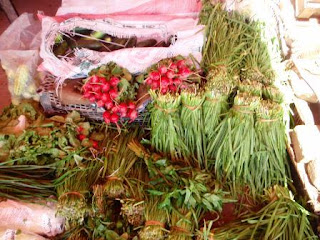Retail sellers
(I have deleted their names for security reasons)
(I have deleted their names for security reasons)
N. R. a retail seller who has been working for five years says” we import these fruits and vegetables from the vegetable wholesale markets. And we don’t buy from one person. We go and see the market and who ever sales it at a good price we buy from that guy. We don’t have a contact with the farmers. They bring their fruits and vegetables to market and we buy it from the wholesalers. And we buy it daily fresh not from storage because they don’t have the storage facility in market”.
Q. another retail seller says “we get our vegetables from wholesale markets and the wholesalers import it from Kabul and Pakistan. Some vegetables come form Balkh province districts like coriander, cucumber, spinach, leeks and lettuce. We buy these vegetables from deferent seller. We see the rates and buy reasonable one. My uncle is my participant person in my shop sometimes me and sometimes he goes and buy it from market and rent a zarange to transfer it from market to our shop”.
N M The retail seller says “we buy our vegetable from wholesale markets. We don’t have a contact with only one person. We see in the market who sales at the lowest price and we buy from that one. Then we rent a zarange to deliver it to our shops. And the farmers bring it to the wholesale markets daily or one day before selling and we buy it from wholesalers. We can not buy it directly from farmers because the can not provide every kind of vegetables. So we can easily buy every thing from one place and one person. If we have a contract with farmers then for ten kinds of vegetables we must contact ten farmers and that is not easy. But we know it’s cheaper to buy directly from farmer”.



+compressed.jpg)






+compressed.jpg)
+compressed.jpg)

+compressed.jpg)


